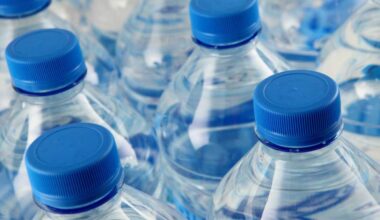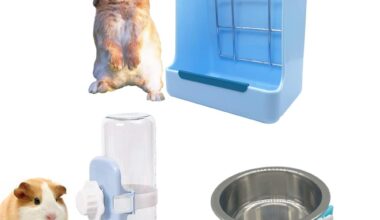Hey there, water enthusiasts! Ever wondered if you can sip on a bottle of water free from the omnipresent fluoride? Well, we’ve got you covered!
Gather around, as we delve into a world where pristine, unadulterated water exists, untouched by the fluoridation process.
Oh yes, my friends, there’s more to your bottled water than just H2O. It’s a narrative bottled up, waiting to be uncapped!
“Water is the driving force of all nature” – Leonardo da Vinci
Who knew this driving force could spark such a riveting debate? Grab a glass, and let’s embark on this hydrating journey together!
Why fluoride is added to tap water
Let’s take a quick dive into the world of tap water. Ever wondered why your tap water has that certain je ne sais quoi? It’s probably fluoride. But why, you ask? Well, saddle up, partner, because we’re about to embark on a brief, but enlightening journey into the heart of your home’s water supply.
Fluoride, that sly fox, is added to our tap water primarily to fight against tooth decay. It’s kind of like a superhero for your teeth. It strengthens them, making them more resistant to acid attacks from plaque bacteria and sugars in your mouth. Imagine it as an invisible shield, tangoing with harmful bacteria to keep your pearly whites, well, pearly white!
Now, let’s not forget about our friend, the government. Public health officials began adding fluoride to tap water way back in the 1940s. It was a move hailed as a significant public health achievement. The Centers for Disease Control and Prevention even dubbed it as one of the great public health achievements of the 20th century. So, it’s got a bit of a reputation.
But, as with any tale, there are two sides to every story. While fluoride is our tooth’s best friend, too much of it can lead to a condition known as fluorosis. No need to hit the panic button though; it’s a typically harmless condition that often results in faint white streaks on the teeth. But it’s still something to consider when you pour yourself a tall, cool glass of tap water.
So, my dear water-drinking compadres, that’s the lowdown on why fluoride is added to your tap water. It’s there to keep your smile dazzling and your dental bills low. Cheers to that!
The controversy around fluoride in drinking water
Oh, the drama of fluoride in drinking water! It’s a controversy that bubbles up more often than a freshly opened sparkling water. Some of us are all for it, while others, not so much. But why?
Fluoride is a natural mineral that, in the right quantities, can help prevent tooth decay. It’s like the superhero of dental health, swooping in to strengthen our enamel and fend off cavities. So, it’s no surprise that it’s often added to our tap water and toothpaste.
However, like any good superhero story, there’s a twist. Some research suggests that too much fluoride could actually be harmful, potentially leading to a condition known as fluorosis or other health concerns. This has sparked a heated debate and left many people seeking fluoride-free alternatives.
- Team Fluoride argues that the benefits of dental health far outweigh the risks.
- Team Fluoride-Free believes that we should have the right to choose whether we consume it or not.
So, is there a middle ground? Can we enjoy the benefits of fluoride without overdoing it? And more importantly, is there any bottled water without fluoride? Stay tuned, water enthusiasts, as we dive deeper into this mystery!
The potential health risks of drinking fluoride
For years, fluoride has been a loyal sidekick in our fight against tooth decay. But, like any superhero movie, there’s a plot twist. Consuming too much fluoride might just have some potential health risks. Let’s pull back the curtain and take a peek, shall we?
- Dental Fluorosis: A fancy name for a not-so-fancy condition. It’s the discoloration and pitting of teeth caused by an excess of fluoride during childhood when teeth are developing. Sounds like a bummer, doesn’t it?
- Skeletal Fluorosis: Think of this as the big brother of Dental Fluorosis. It’s a bone disease caused by excessive consumption of fluoride. Symptoms include joint pain and stiffness, and in severe cases, it can alter the bone structure and lead to mobility issues.
- Thyroid Problems: Our thyroid is a bit of a drama queen. It can be very sensitive to high levels of fluoride, potentially leading to problems like hypothyroidism. As if we didn’t have enough to worry about already, right?
- Neurological Issues: Some research suggests that high fluoride exposure could have an impact on children’s cognitive development. We know, this sounds a bit sci-fi, but science doesn’t lie, folks!
Now, don’t panic. These health risks are associated with high levels of fluoride, not the amount typically found in drinking water. However, if you’re concerned, there are various options for fluoride-free bottled water on the market.
How to remove fluoride from tap water at home
So, you’ve decided to join the de-fluoridation nation, and you’re wondering how to remove fluoride from your tap water at home? Well, you’re in the right place, my friend. Let me guide you through some DIY fluoride-fighting techniques.
Activate Your Charcoal
Activated charcoal, also known as activated carbon, is a super absorbent material that loves to grab onto fluoride ions. By using a water filter pitcher equipped with activated charcoal, you can significantly decrease the fluoride content in your tap water. It’s like a thirst-quenching magic trick!
Distillation Stations
For those seeking a high-tech solution, consider investing in a distillation unit. This device works by boiling water to steam, then collecting the condensation, which is virtually fluoride-free. It’s a little science fiction, a little science fact, and a whole lot of fluoride fighting power!
Reverse Osmosis
If you’re up for a bit of home improvement, you could install a reverse osmosis system. This process forces water through a semi-permeable membrane, leaving fluoride and other impurities behind. While it’s a bit more costly and labor-intensive, it’s a surefire way to get fluoride-free water direct from your tap.
Bone Char Filters
Yes, you read that right – bone char. This material, made from animal bones, is incredibly effective at removing fluoride. It’s a bit unconventional, but for the adventurous DIY-er, bone char filters offer a unique and natural solution.
So there you have it, folks. Whether you’re activating charcoal, distilling, reversing osmosis, or even using bone char, there are plenty of ways to remove fluoride from your tap water at home. Now, go forth and enjoy your fluoride-free hydration!
Different types of bottled water and their fluoride content
Ever wondered what’s in that refreshing gulp of bottled water you take? Well, let’s dive into the deep end of this ocean of knowledge. It’s a known fact that different types of bottled water have varying levels of fluoride content. But what does this mean for you?
Spring Water is typically sourced from an underground formation where water naturally flows to the surface of the earth. The fluoride content here varies, but it’s usually quite low. It’s a fluoride-free option that doesn’t leave you high and dry!
With Mineral Water, you’re in for a mineral-rich ride! It contains various minerals like magnesium, potassium, and you guessed it, fluoride. However, the fluoride levels are usually quite low and fall well within the recommended limits.
Purified Water, or distilled water, goes through a rigorous filtration process. This process removes impurities, including fluoride. So, if you’re seeking a fluoride-free bottled water, this one has your name written all over it!
Let’s talk about Alkaline Water. This one is a bit of a wild card. Some brands of alkaline water add fluoride, while others do not. It’s a game of chance with this one, so be sure to check the label!
Remember, while fluoride can be beneficial for dental health in the right amounts, excessive consumption may lead to health issues. So, it’s all about striking the right balance!
Don’t worry, you don’t need to be a water sommelier to figure this out. Simply read the labels, understand your needs, and choose the bottled water that quenches your thirst, both physically and informationally!
The benefits and drawbacks of drinking bottled water
, bottled water has two sides to it. On one side, it’s the hero we all need during camping trips, picnics, and emergencies. On the other side, it raises questions about its impact on our health and the environment. Let’s dive into the details.
The Bright Side
Bottled water is a lifesaver when it comes to convenience and emergency preparedness. It’s portable, handy, and readily available wherever you go. Plus, in times of natural disasters when clean water supply is compromised, bottled water comes to the rescue.
The Dark Side
However, bottled water isn’t without its drawbacks. It’s more expensive than tap water, and it can also contain potentially harmful chemicals like fluoride. Plus, let’s not forget the environmental impact of all those plastic bottles.
Fluoride: Friend or Foe?
Fluoride often gets a bad rap because of its potential health effects. While it can help prevent tooth decay at the right levels, too much fluoride can lead to dental and skeletal fluorosis.
What’s the Solution?
Well, you’re in luck. There are several brands of bottled water that are fluoride-free, giving you all the convenience without the potential risks. We’ll dive into those next.
Is there any bottled water without added fluoride?
Ever feel like you’re playing a game of “Find the Hidden Ingredient” when you’re shopping for bottled water? Well, the quest for fluoride-free water might just be the most exciting round yet!
Yes, there’s bottled water without added fluoride! Contrary to popular belief, not all bottled water is created equal, and some manufacturers do choose to skip out on the fluoride. So, who are these mystery players in the fluoride-free water game?
Brands of Fluoride-Free Bottled Water
- Evian: Known for their commitment to pure water, Evian doesn’t add any fluoride.
- AquaSpring: Another brand that’s big on purity and not on fluoride.
- Mountain Valley Spring Water: If you’re looking for fluoride-free spring water, this is your brand.
Keep in mind, these are just a few of the many brands out there. It’s always a good idea to do your own research and read the labels!
Remember, just because it’s bottled, doesn’t mean it’s fluoride-free.
Choosing to go fluoride-free is a personal decision. So whether you’re against fluoride for health reasons, or just like the taste of pure, unadulterated water, there are options out there for you.
Brands of bottled water that do not contain fluoride
Ever wondered if there’s bottled water without fluoride? You’re not alone! Many folks prefer their H2O fluoride-free, and some brands are happy to oblige.
Here are some go-to brands for fluoride-free hydration:
- Mountain Valley Spring Water: This brand bottles its water straight from a natural spring in the Ouachita Mountains. No fluoride added here!
- Eternal: This water is naturally alkaline (aka it has a high pH level) and fluoride-free. Plus, it’s sourced from protected underground springs.
- Aqua Panna: Here’s a taste of Tuscany, free from fluoride. This smooth-tasting water is bottled at the source in Italy.
Remember, these are just a few options. There’s an ocean of bottled water choices out there!
Still, as you navigate these waters, keep in mind that not all fluoride-free waters are created equal. Different brands may offer different additional benefits or drawbacks. It’s always a good idea to do a little research and choose what suits your needs best.
So, ready to dip your toes into the world of fluoride-free bottled water? Dive right in!
The importance of reading labels on bottled water
It’s a jungle out there in the bottled water aisle. With a dizzying array of choices, how do you choose the one that’s best for you? Well, my water-loving friends, it often boils down to the art of reading labels. Yes, indeed!
Why? You may ask. Well, labels can tell you a whole lot about what you’re about to pour down your gullet. For instance, they can reveal whether your bottled water has been filtered, purified, or if it contains added minerals or – you guessed it – fluoride!
But wait, there’s more! Labels can also clue you in on the water’s source – whether it’s spring, artesian or, brace yourself, municipal tap water in disguise. Yup, you read that right!
So, before you grab that bottle off the shelf, pause a moment, flip it around, and give that label a good read. Your body will thank you later.
- Filtered Water: This usually means the water has been passed through layers to remove impurities.
- Purified Water: This water has been treated to remove not just impurities, but also any minerals.
- Mineral Water: This type has naturally occurring minerals and trace elements. Check if fluoride is one of them!
- Spring/Artesian Water: Sourced from a natural spring or well, this water may contain a variety of minerals, including fluoride.
- Municipal Tap Water: Sometimes, bottled water is just good ol’ tap water that’s been filtered or treated. Yes, really!
Remember, not all bottled water is created equal. So the next time you find yourself parched and reaching for a bottle, take a moment to check the label. You never know, you might just find a fluoride-free option that’s perfect for you!
Alternatives to bottled water for fluoride-free drinking
Alright folks, let’s dive into a topic that’s hotter than a jalapeño on a Texas summer day: fluoride-free drinking water. You might be asking, “Can I find alternatives to bottled water that don’t have fluoride?” You betcha! Let’s look into it.
First things first, how about tap water? Most places don’t add fluoride to their tap water, so it might just be your easiest and most affordable option. But what if you really don’t trust that city water? No worries, I’ve got you covered.
Water Filters
Have you considered water filters? They’re not just for making your coffee taste better, you know. Certain types, like reverse osmosis filters, can effectively remove fluoride from water.
However, not all filters are created equal. Some might remove beneficial minerals alongside the fluoride, so make sure to do your homework before you invest.
Spring Water
Ever thought about going natural with spring water? Yes, it’s a thing! Some companies deliver bottled spring water right to your doorstep. This water usually has naturally low levels of fluoride. Ain’t Mother Nature grand?
Water Distillers
Water distillers are another alternative. They work by boiling the water and collecting the steam, leaving behind the majority of the fluoride. Remember to check whether your chosen model removes fluoride, as not all do.
Important: Always double-check the fluoride content of your water, whether from a bottle, filter, spring, or distiller. You might just avoid a “fluoride fright”!
Our quest for fluoride-free water might be a long one, but with these alternatives, it’s definitely not impossible. Here’s to your health and happiness, and the joy of discovery on this incredible water-filled journey!
Fluoride-free water filters for home use
Look at you, sipping on your glass of water, casually wondering, “Is there really fluoride in here?” Don’t worry, you’re not alone in this quest for fluoride-free water. So, let’s dive in, shall we?
First off, yes, there are water filters designed to filter out fluoride right in the comfort of your own home. You’re not dreaming, folks!
Now, you might think, “Great, but what kinds of filters are we talking about here?” Well, my curious friend, there are a few different types:
- Reverse Osmosis Filters: These bad boys are the heavy hitters in the world of fluoride filtering. They can remove up to 90% of fluoride from your tap water. Not too shabby, right?
- Activated Alumina Filters: Want to feel like a scientist? Then this is your filter. Activated alumina filters can reduce fluoride levels to a mere 0.1 parts per million. Now that’s precision!
- Deionization Filters: If you’re not into big words, just remember this one as “the filter that makes water pure”. It removes pretty much everything, including fluoride, leaving you with nothing but H2O.
That’s all well and good, but “what about the cost?” I hear you cry. Fear not! These filters come in a range of prices, from the budget-friendly to the “oh, you must really love your water” end of the scale.
So there you have it. You now have the power to choose a fluoride-free life at home. Pretty cool, huh?
Remember, we’re all on this water journey together, so let’s make every sip count!
Making an informed decision about your drinking water
Hey there, water connoisseur! Ready to make an informed decision about the H2O you’re sipping? Excellent, because it’s time to ride the wave of knowledge about fluoride-free bottled water. Why? Well, because you’re worth it, my friend!
So, what’s the 411 with fluoride? This cheeky little compound is often added to public water supplies and bottled water to help prevent tooth decay. But, here’s the kicker: not everyone is a fan. Some folks argue it’s not as necessary as we’ve been led to believe, while others have health concerns. It’s a bit like the pineapple-on-pizza debate, but with fewer calories.
Good news though, if you’re on team “No Fluoride”, there are plenty of bottled water options available for you. Brands like Mountain Valley Spring Water, Whole Foods 365, and Aquafina all offer fluoride-free versions.
Remember: Always check the label when you’re searching for fluoride-free water. Companies are required to list any added minerals, so you can make an informed choice about what you’re drinking.
But wait, there’s more! If you’re feeling a bit adventurous and want to give tap water a miss, why not consider these options:
- Distilled Water: This is water that has been boiled into vapor and condensed back into liquid. It leaves behind any impurities, including fluoride. You can even distil water at home if you’re feeling a bit MacGyver-ish today.
- Reverse Osmosis Water: This is another method that can remove fluoride. It filters water through a special membrane. Sounds high tech, right? It’s the same process used to desalinate seawater. Just remember, it can also remove some beneficial minerals, so you might need to supplement your diet.
- Spring Water: This water comes straight from the earth and usually doesn’t contain added fluoride. But again, check the label, because Mother Nature doesn’t always play by the rules.
Choosing the right water for you
You’re unique, like a snowflake or a double rainbow. That’s why there’s no one-size-fits-all answer when choosing your water. It depends on your individual health needs, lifestyle, and, of course, taste preferences. So, take a moment, think about what you want from your water, and then dive right into making that informed decision. After all, you’re not just any water drinker, you’re a well-informed water aficionado!






